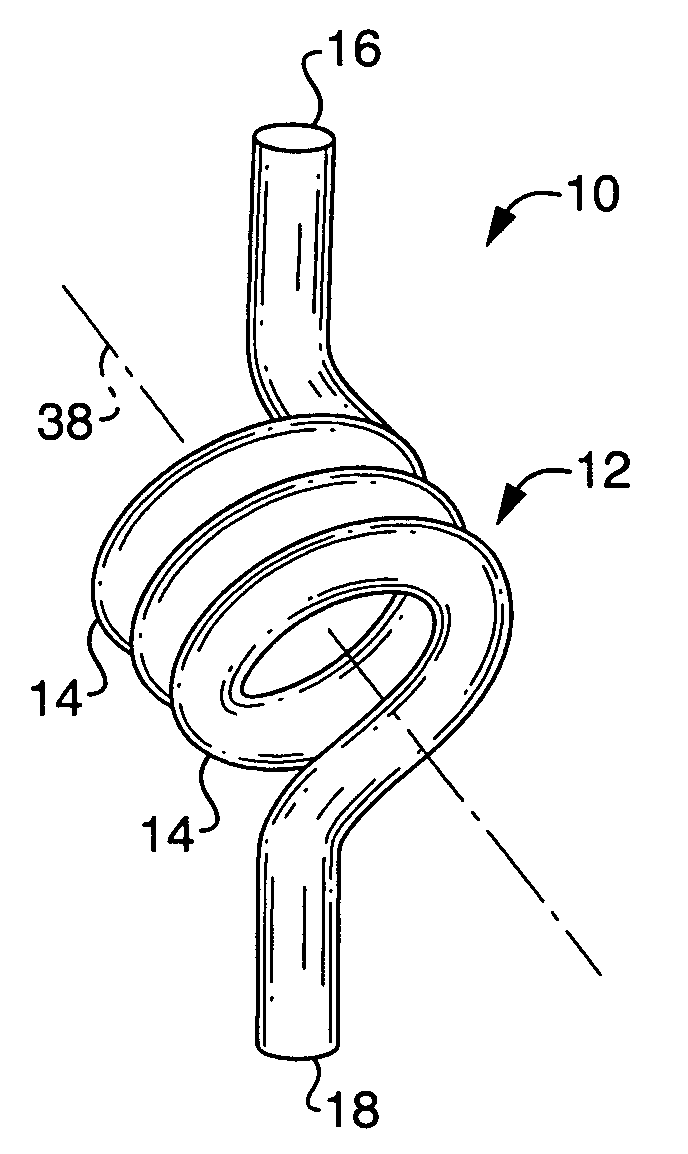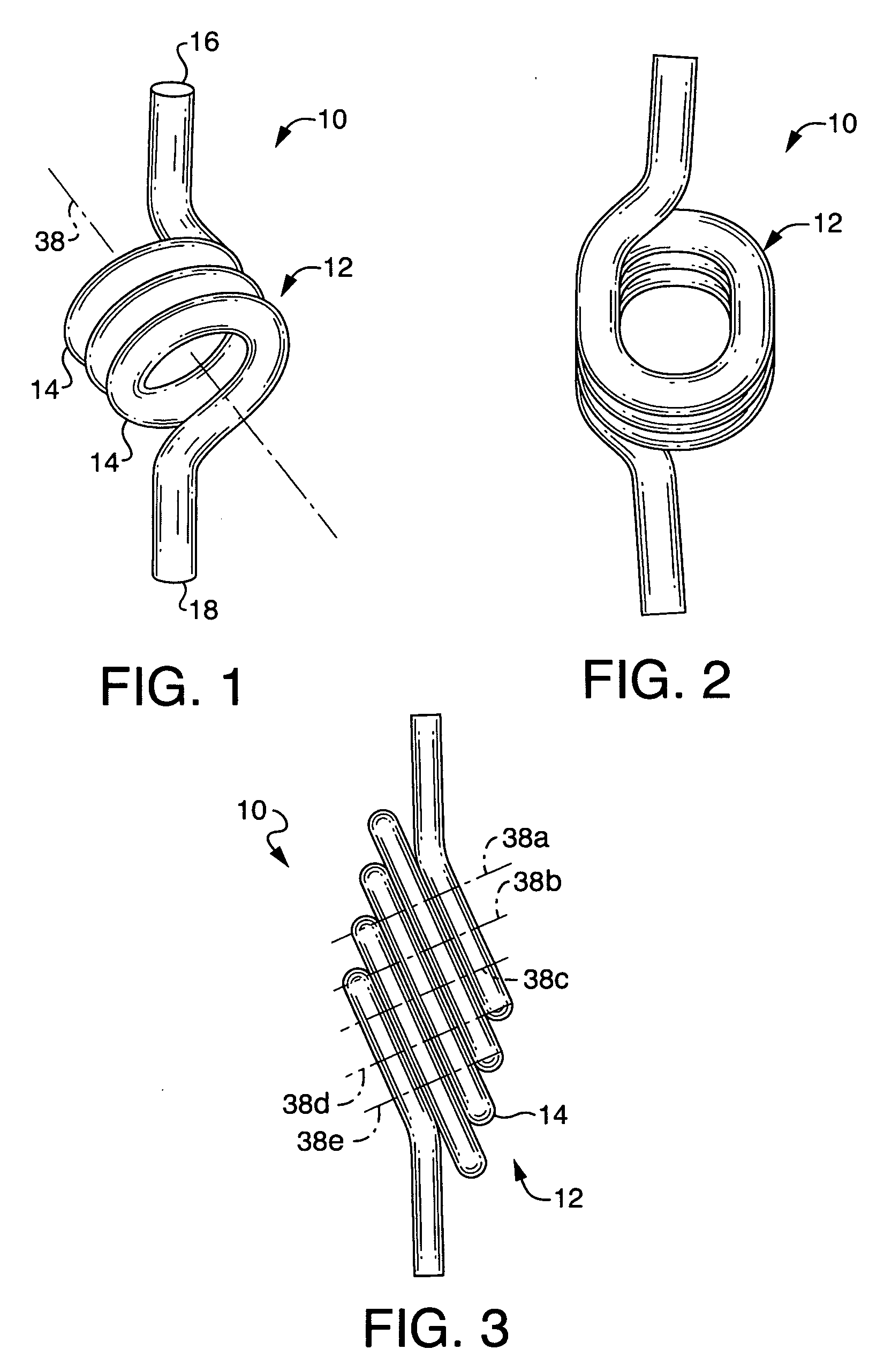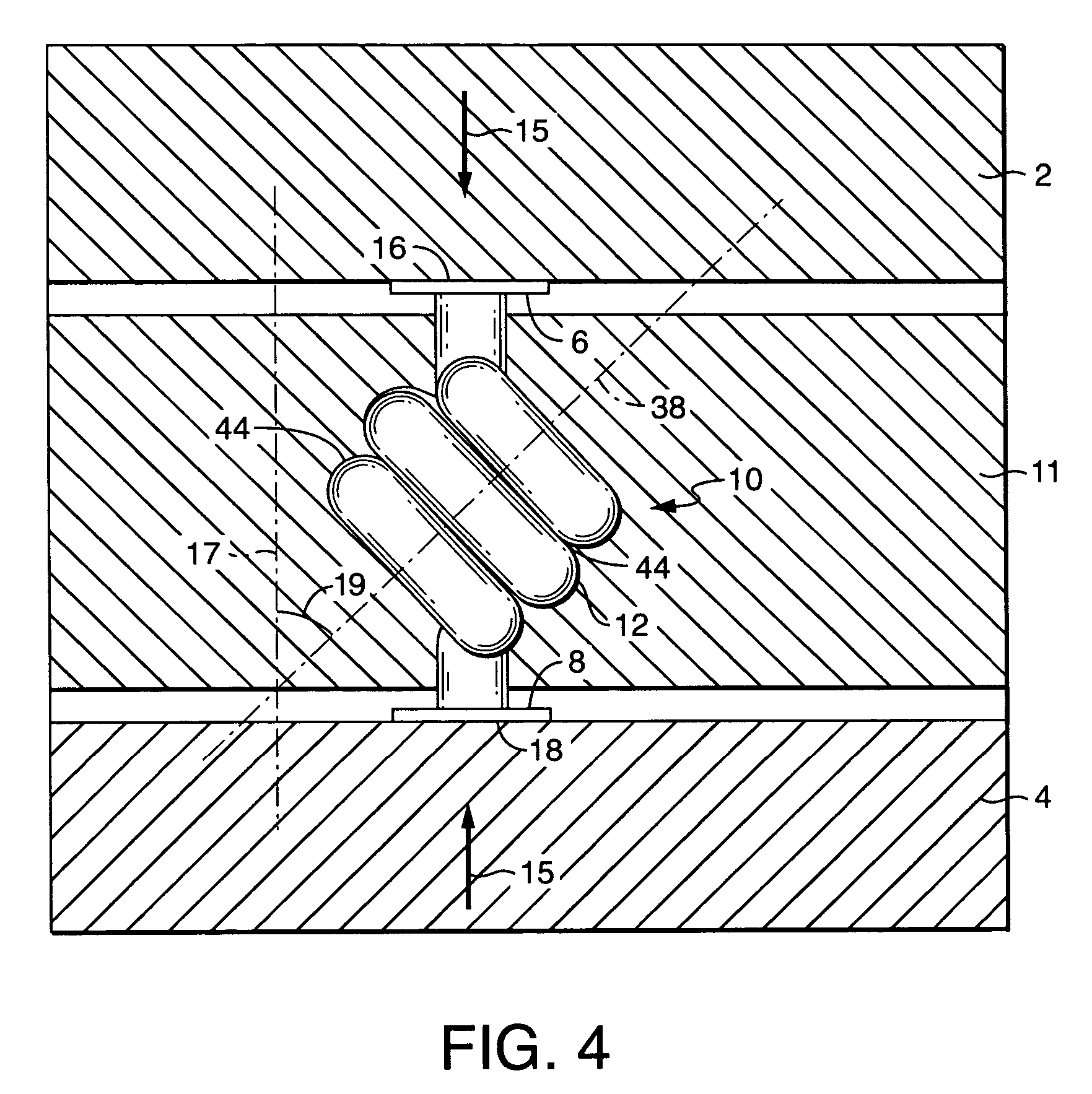Compliant electrical contact assembly
a technology of electrical contacts and assemblies, applied in the field of very small compliant electrical contacts, can solve the problems of inability to make springs very small, inability to maintain consistent spring force from contact to contact, and relative cost of manufactur
- Summary
- Abstract
- Description
- Claims
- Application Information
AI Technical Summary
Benefits of technology
Problems solved by technology
Method used
Image
Examples
Embodiment Construction
[0046] The present invention is an assembly 11 that provides an interface between two electrical devices, typically a unit under test (UUT) 2 and a test bed 4. The assembly 11 includes a compliant electrical contact 10 with a very low self-inductance.
[0047] The contact 10 is created by winding or forming a length of electrically conductive material into a coil 12. The coil 12 can be round, as in FIG. 1, or oval, as in FIG. 2. The coil 12 can have a constant diameter or can have a diameter that changes, such a conical shape. The loops 14 of the coil 12 may have a single axis 38, as in FIG. 1, or each loop 14 may have its own axis 38a-38e, all of which are parallel, as in FIG. 3. The gap 44 between loops 14 of the coil 12, shown in FIG. 4, ranges from essentially no gap (a closed coil) to a distance of up to about 100% of the largest wire cross-sectional dimension. The greater the wire cross-sectional dimension, the greater the gap 44 can be as a percentage of the cross-sectional dim...
PUM
 Login to View More
Login to View More Abstract
Description
Claims
Application Information
 Login to View More
Login to View More - R&D
- Intellectual Property
- Life Sciences
- Materials
- Tech Scout
- Unparalleled Data Quality
- Higher Quality Content
- 60% Fewer Hallucinations
Browse by: Latest US Patents, China's latest patents, Technical Efficacy Thesaurus, Application Domain, Technology Topic, Popular Technical Reports.
© 2025 PatSnap. All rights reserved.Legal|Privacy policy|Modern Slavery Act Transparency Statement|Sitemap|About US| Contact US: help@patsnap.com



